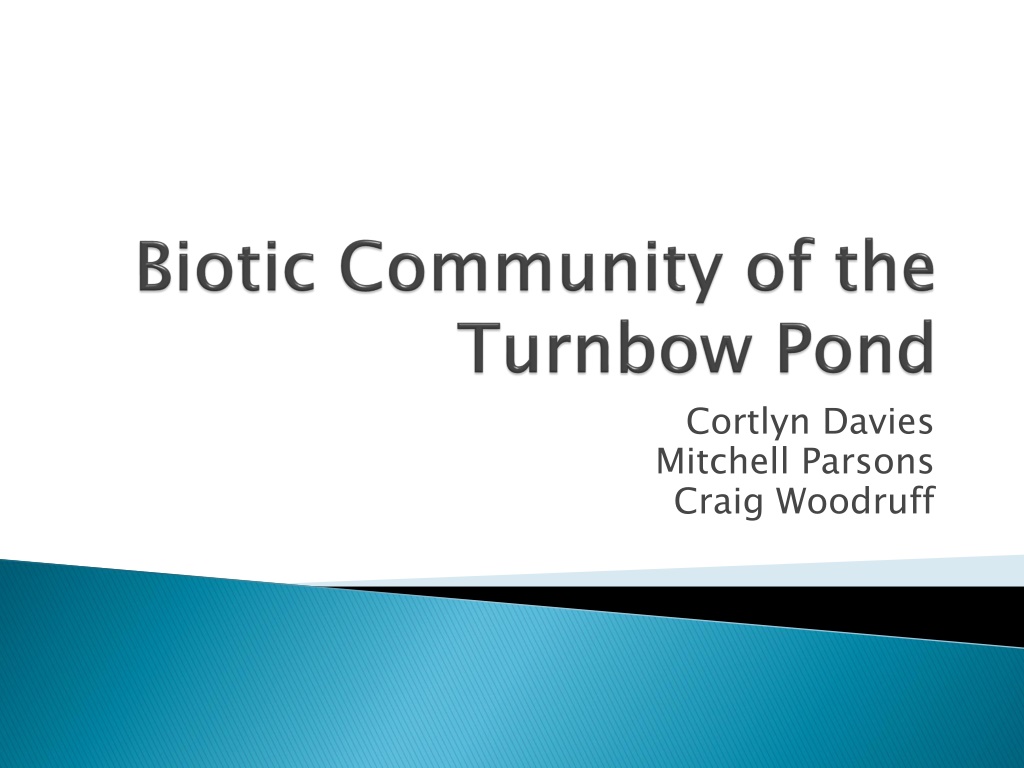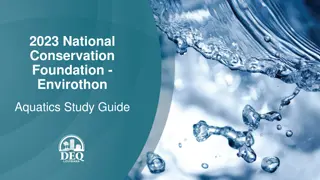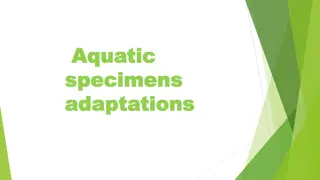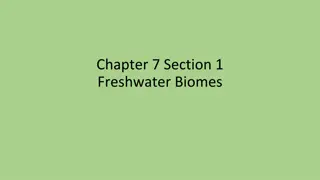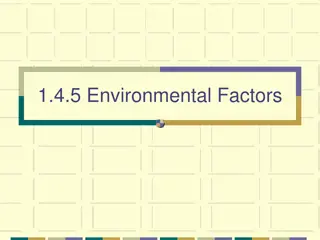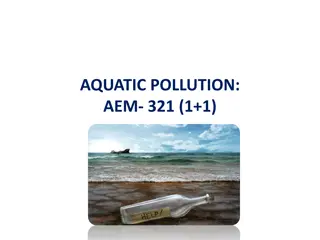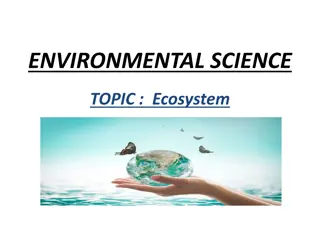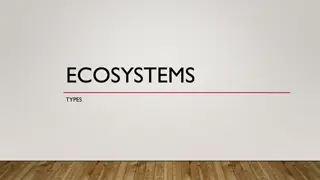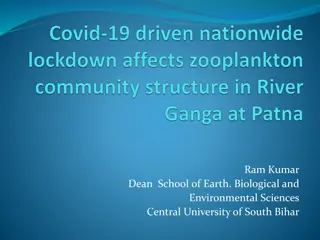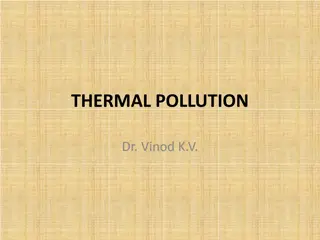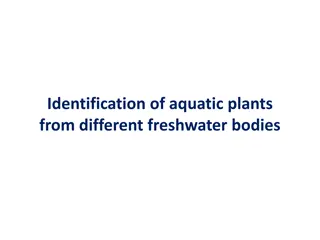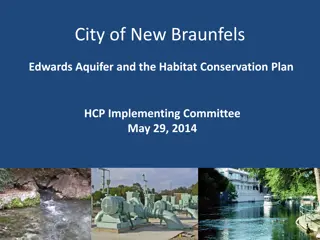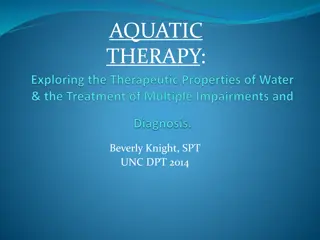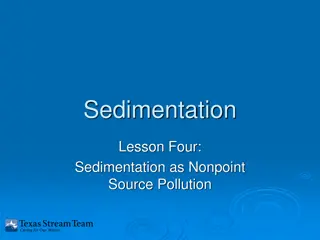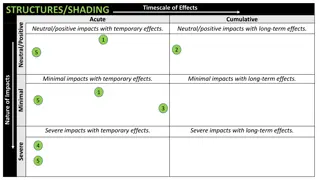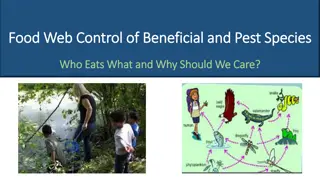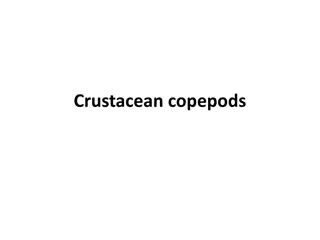Understanding Zooplankton Dynamics in Aquatic Ecosystems
Zooplankton play a crucial role in aquatic ecosystems by regulating algal populations, serving as a food source for fish, and maintaining ecological balance. This overview covers sampling methods, taxonomic classifications, density measurements, and the impact of zooplankton on fish populations. Issues such as low zooplankton density and fish overstocking are addressed, highlighting the importance of maintaining a healthy zooplankton community for ecosystem stability.
Download Presentation

Please find below an Image/Link to download the presentation.
The content on the website is provided AS IS for your information and personal use only. It may not be sold, licensed, or shared on other websites without obtaining consent from the author. Download presentation by click this link. If you encounter any issues during the download, it is possible that the publisher has removed the file from their server.
E N D
Presentation Transcript
Cortlyn Davies Mitchell Parsons Craig Woodruff
Zooplankton Regulate algal population and control algal blooms. Important food source for planktivorous fish (e.g. trout).
Zooplankton Regulate algal population and control algal blooms Important food source for planktivorous fish (e.g. trout) Macrophytes Stabilize sediment Refugium for zooplankton Produce oxygen through photosynthesis. Alternate stable states
Wisconsin-style closing plankton net Sampled at 3 locations in the pond Full water column samples Triplicates at each site http://www.wildco.com/images/C/40.jpg
Subsample each collection Count individuals in subsample Use counts and volumes to estimate denisty Average triplicates, then site averages to estimate pond-wide community http://m7.i.pbase.com/o6/55/932755/1/1 36788177.9DMgpcet.Cyclopoida4.JPG http://upload.wikimedia.org/wikipedia/com mons/4/4e/Daphnia_pulex.png
7 6 5 Density (Ind/L) Density (Ind/L) 4 3 2 1 0 Cladocera Copepods Taxa Taxa
4 3.5 3 2.5 Density (Ind/L) Density (Ind/L) 2 1.5 1 0.5 0 Daphnia Ceriodaphnia Bosmina Diaphanasoma Taxa Taxa
2 1.8 1.6 1.4 Density (Ind/L) Density (Ind/L) 1.2 1 0.8 0.6 0.4 0.2 0 Cyclopoids Calanoids Taxa Taxa
Predominantly Cladocerans -> Good for fish Majority of Cladocerans are Ceriodaphnia -> too small for fish Many rotifers -> too small for adult fish Zooplankton density is extremely low Turnbow Pond: 7 ind/L Spring Valley: 33 ind/L Carlson Pond: 1515 ind/L Dynamite lake (Vanni et al. 1987): 1.4 ind/L (Ceriodaphnia)
Fish stock too high, depressing zooplankton population Hyperpredation due to artificial feeding No refugium in macrophytes Feeding can maintain fish, but low zooplankton has other consequences
Reduce fish stock Alter community: Piscivores Reduce artificial feeding Establish macrophytes (suggestions to come)
Biomanipulation http://terraqua-es.co.uk/wp-content/uploads/2012/05/biomanipulation.jpg
Ten sites in pond body Three sites in each bay Eckman grab sampler Sift and collect macrophytes Clean and dry Weigh to estimate density 3x 3x Google Earth
Current State: Macrophytes Little macrophyte cover (<1g/m2) Good for swimming, bad for ecology More in the shallow bays, but still small amount 250 200 Density (g/m2) 150 100 Density (g/m2) 50 0 Body Bays Location
Bank to steep to support macrophyte growth (Duarte and Kalff 1988) Unable to establish because too little light for photosynthesis Clearing of all macrophytes when expanded pond
More gradual incline on bank Buffer to reduce turbidity increase light Start around edges of pond Plant emergent macrophytes such as lillies Same function, more aesthetic Low growing submerged macrophytes
Buffer zone around lake (~50 feet) Alter fish community Prevent resuspension via swimming on bottom Increase zooplankton community In turn reduces algae density Establish macrophytes Prevent sediment resuspension Provide refuge for zooplankton Suggest around 50% coverage for diversity and water quality (NRCS 2006 and Hilt et al. 2006)
Duarte, C. M., and J. Kalff. 1988. Influence of lake morphometry of the response of submerged macrophytes to sediment fertilization. Canadian Journal of Fisheries and Aquatic Sciences 45: 216-221. Hilt, S., E.M. Gross, M. Hupfer, H. Morcsheid, J. M hlmann, A. Melzer, J. Poltz, S. Sandrock, E. Scharf, S. Schneider, and K. van de Weyer. 2006. Restoration of submerged vegetation in shallow eutrophic lakes A guidline and state of the art in Germany. Limnologica 36: 155-171. Natural Resource Conservation Service. 2006. Farm pond ecosystems. Fish and Wildlife Habitat Management Leaflet. No. 29. Vanni, M. J. 1987. Effects of nutrients and zooplankton size on the structure of a phytoplankton community. Ecology 68: 624-635.
